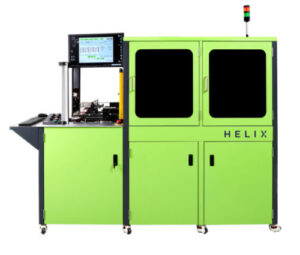By Ryan McAbee, PixelDot Consulting
Growing into Direct-to-Product Markets
Inkjet printing technologies are enabling a new, diverse class of direct-to-product applications. Direct-to-product (DtP), also known as direct-to-shape printing, is the process of taking a two-dimensional image and printing it on a three-dimensional shaped object. The interest and growth in DtP stem from consumers’ desire to customize and, in some cases, personalize, products from their favorite consumer brands. Look no further than the latest consumer craze for Stanley drinking tumblers that can be customized with monograms, logos, and text directly on the company’s website. Another source of demand extends from the promotional printing market that is adopting digital, inkjet-based printing technologies over analog printing technologies. Digital inkjet printing provides advantages for cost-effective small-batch manufacturing, faster turnaround times, and environmental advantages in the production process.
Online Customization is Key for Direct-to-Product
Inkjet printing technologies and ink formulations to adhere to a diverse set of products were critical developments for the DtP market. The buyers of DtP are largely end-use consumers and businesses purchasing branded promotional materials that know little about printing processes. To reach these buyers, print providers must have a robust online presence with an easy-to-use and capable web-to-print solution. The process begins with the buyer selecting the product to customize, uploading artwork or creating a custom design using the provided online design tool, previewing a 3D rendering of the output for approval, then completing the shopping cart checkout.
Printing Methods for Direct-to-Product

Source: Inkcups, Helix Direct to Shape Inkjet Printer
Future Market Insights, a market research firm, estimates a $3.2 billion market for direct-to-object printers in 2024, growing to about US$ 4 billion by 2034 at an annual compounded rate of 2.3% from 2024 to 2034. The growth anticipates a continued interest in customized and personalized products.

Source: Meteor Jetron D2Shape CT Series Inkjet
The applications drive the printing technology requirements. Carpet tiles, interior doors, and other rigid materials with a flat printing surface and thickness generally up to 4 inches can be printed with a variety of flatbed inkjet printers. Another class of inkjet printers can also be used to directly onto a 3D surface like drinkware, golf balls, and other promotional items. These inkjet printers, from companies like Inkcups, Meteor Jetron, LogoJET, and Mimaki, use custom trays where the product is placed by an operator prior to printing.

Source: LogoJet Edible Inkjet Printer
The production workflow requirements are like those in digital packaging. The file typically contains multiple layers where separations are handled by the Raster Image Processor (RIP) that is often provided by the OEM. A primer and white layers may be needed as a base before the colored inks (e.g., CMYK) can be applied. A varnish or topcoat can also be used to provide more durability. Software like Inkcups’ ArtPrep can speed up the process by automatically creating the layered separations and the needed output file to send to the RIP for printing.

Source: Inkcups, Helix Direct to Shape Inkjet Printer
Production Benefits of Direct-to-Product
Screen printing has been the most common analog printing method for producing D2P applications prior to the arrival of digital inkjet alternatives. Digitizing the process offers several production benefits: removal of processes required, improved turnaround time, and less environmental impact. Unlike screen printing, digital inkjet printing does not require the time and resources to create and stretch mesh screens, apply and wash out emulsions, and expose film. Digital inkjet printing removes the chemistry and water usage required in screen printing which reduces costs and aligns with today’s sustainability initiatives. Having fewer processing steps also increases the speed of production and resulting turnaround times that can be offered to customers.
Whether you target consumer brands or consumers directly, there is an expanding market opportunity for D2P applications driven by the analog-to-digital change from inkjet printing technology. Print providers can embrace these business opportunities to expand offerings to existing clients and grow new lines of revenue.

